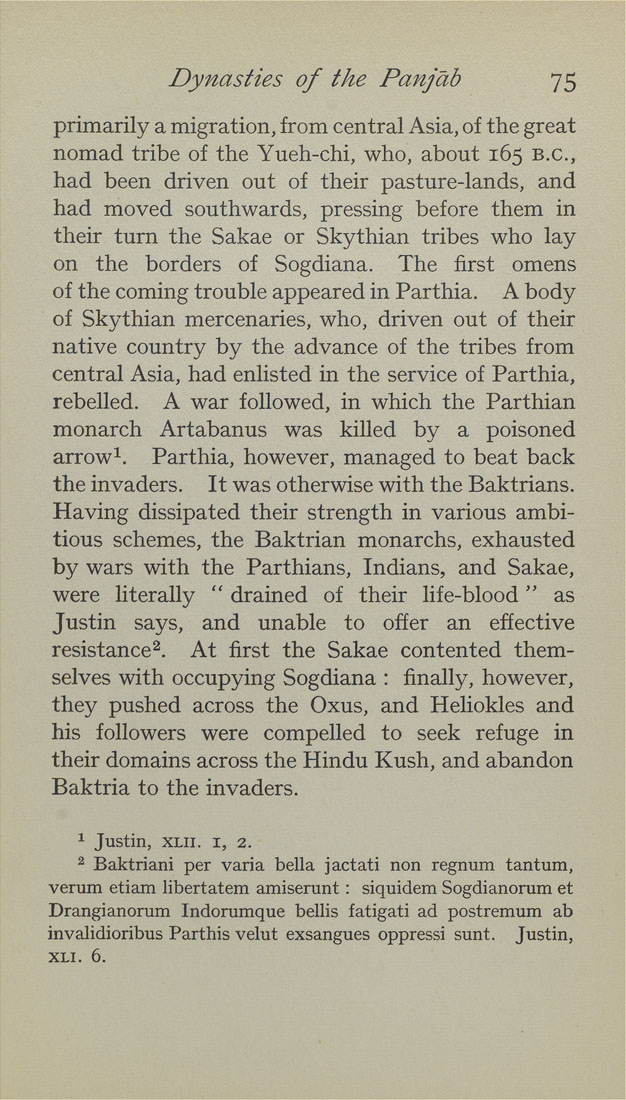Dynasties of the Panjab 71
primarily a migration, from central Asia, of the great
nomad tribe of the Yueh-chi, who, about 165 B.C.,
had been driven out of their pasture-lands, and
had moved southwards, pressing before them in
their turn the Sakae or Skythian tribes who lay
on the borders of Sogdiana. The first omens
of the coming trouble appeared in Parthia. A body
of Skythian mercenaries, who, driven out of their
native country by the advance of the tribes from
central Asia, had enlisted in the service of Parthia,
rebelled. A war followed, in which the Parthian
monarch Artabanus was killed by a poisoned
arrow^. Parthia, however, managed to beat back
the invaders. It was otherwise with the Baktrians.
Having dissipated their strength in various ambi¬
tious schemes, the Baktrian monarchs, exhausted
by wars with the Parthians, Indians, and Sakae,
were literally " drained of their life-blood" as
Justin says, and unable to offer an effective
resistance^. At first the Sakae contented them¬
selves with occupying Sogdiana : finally, however,
they pushed across the Oxus, and Heliokles and
his followers were compelled to seek refuge in
their domains across the Hindu Kush, and abandon
Baktria to the invaders.
1 Justin, XLii. I, 2.
2 Baktriani per varia bella jactati non regnum tantum,
verum etiam libertatem amiserunt: siquidem Sogdianorum et
Drangianorum Indorumque bellis fatigati ad postremum ab
invalidioribus Parthis velut exsangues oppressi sunt. Justin,
XLI. 6.
|








